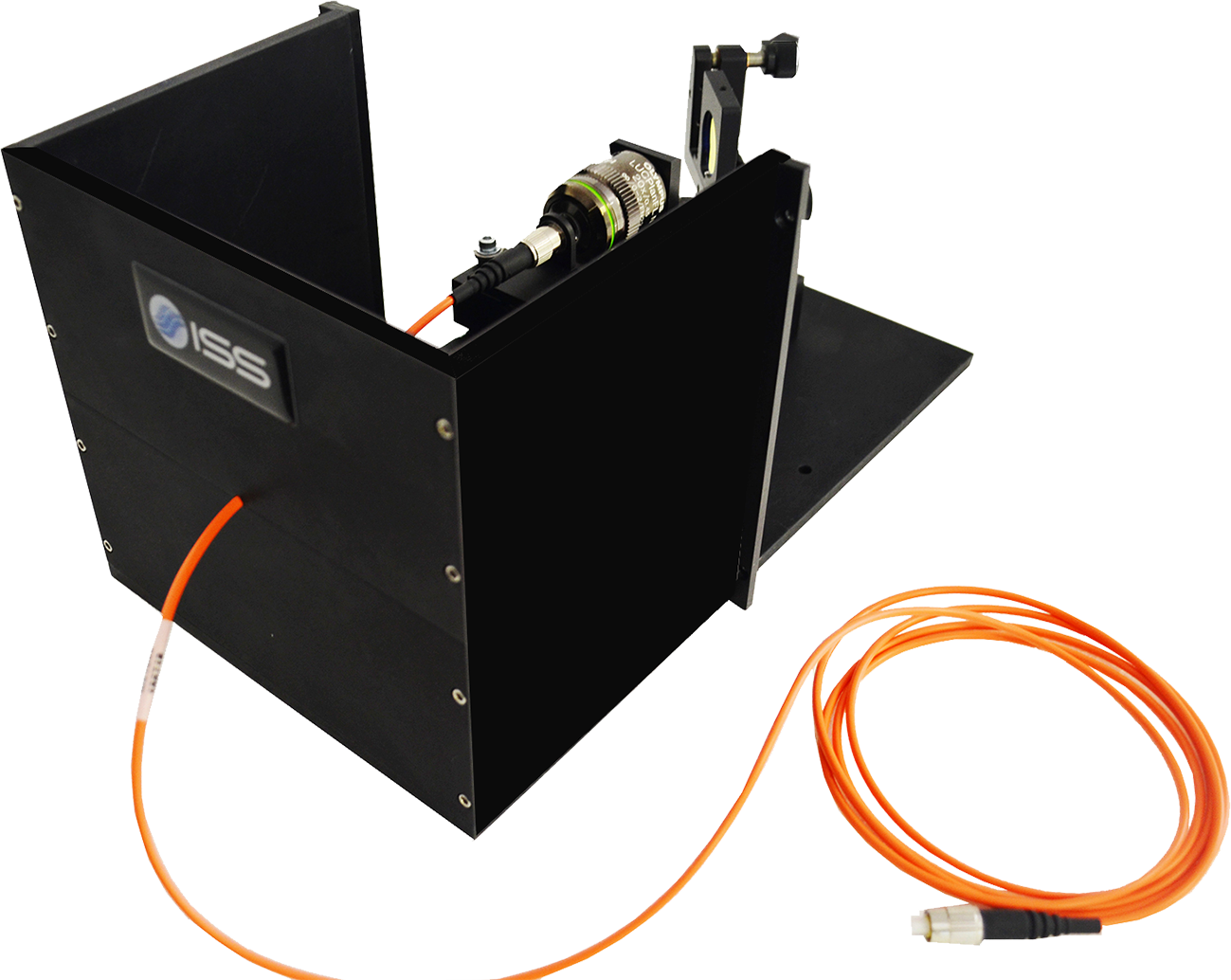Chemically Activated Fiber Tip
The fiber optics sensor (FOS), or chemically-activated fiber tip, allows for the measurement to be performed in-situ, which is particularly of interest when the sample to be monitored is remote or is embedded in hazardous conditions (high temperature, toxic, flammable, high voltage, etc...). The accessory can be used to detect the presence of specific molecules inside the body (endoscope), to detect the presence of molecules in bioreactors, or to map the concentration of environmentally sensitive molecular complexes at different depths of the ocean.
The device consists of a fiber that channels using proper optics, the light produced by the spectrofluorometer's laser and carries it to the other end of the fiber, where a specific fluorophore is embedded in a polymeric matrix. The light excites the fluorophore; a portion of fluorescence is carried back through the same fiber to the instrument that monitors its properties (intensity or decay times).
The fiber of about 100 µm in diameter can be up to 250 m long.



